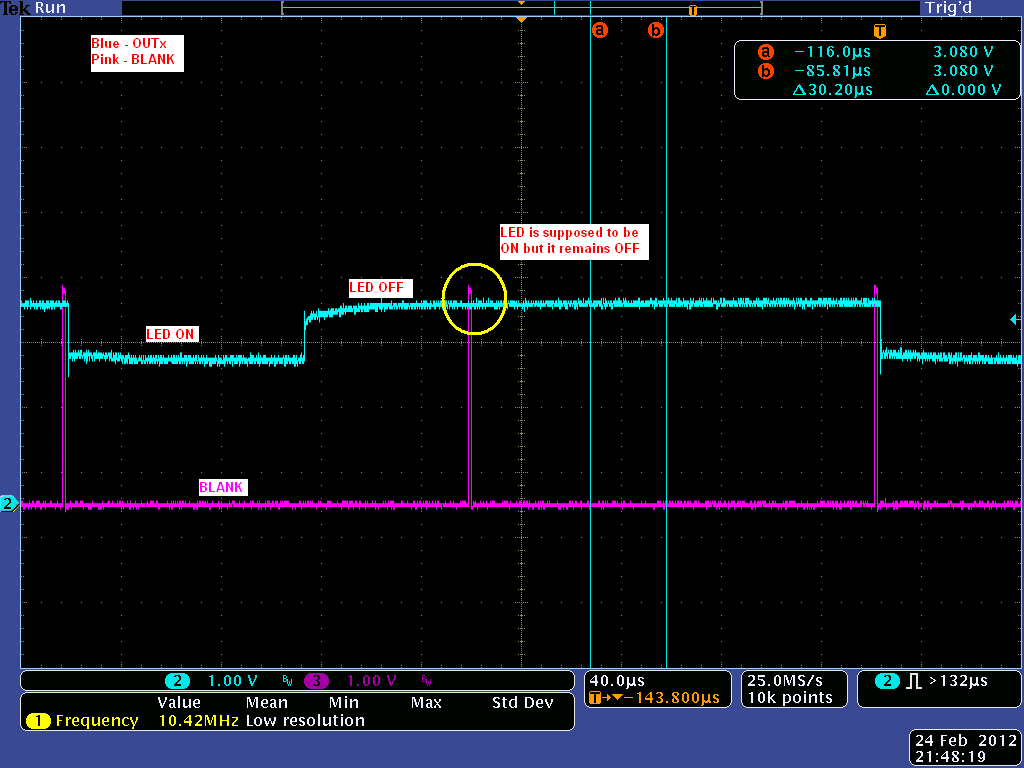Hi,
I am planning to use TLC5945 for driving my LEDs (basically I have 36 LEDs - 12 each for Red, Blue and White).
I need a few clarifications regarding working of this chip
- As per datasheet, max voltage at OUT terminal is 17V which means I can have three to four LEDs (based on forward voltage) in series at each channel. Now, each LED has a min to max rating for forward current which is 2.6V to 3.5V for my LED. If I connect 4 LEDs in series at each channel, I need to give ~15V (3.5*4V plus 1V headroom for OUT regulation).
Now, in worst scenario if all the LEDs have min value of forward voltage i.e. 2.6V, voltage at OUT pin will be 4.6V (15V minus 4*2.6V). As per fig 5 in datasheet, output current variation w.r.t. OUT pin voltage is shown upto 3V only. So, what will happen if voltage at OUT pin goes above 3V?
As per my understanding, power dissipation for internal switch will increase. But will it still be able to regulate the programmed current if I take care of heat dissipation? What is the max voltage limit at OUT pin such that device will be able to maintain constant current sinking upto a reasonable level of accuracy?
- As per fig 6, after 4096 GSCLK cycles, this signal stops toggling and then BLANK goes HIGH. Does it mean that GSCLK should not toggle after 4096 CLK cycles and when BLANK is high? As GSCLK is given externally, such requirement seems unlikely but I just wanted to clarify.






